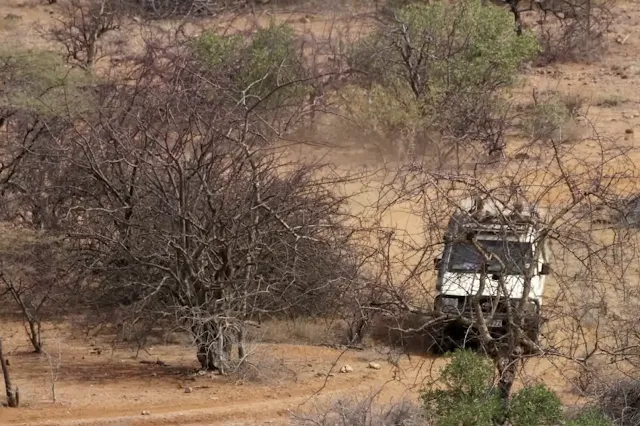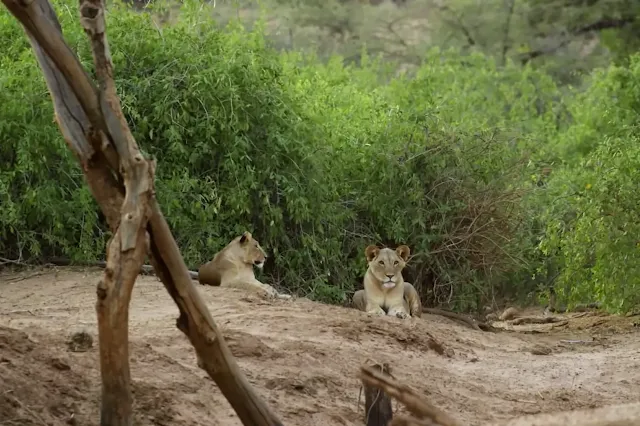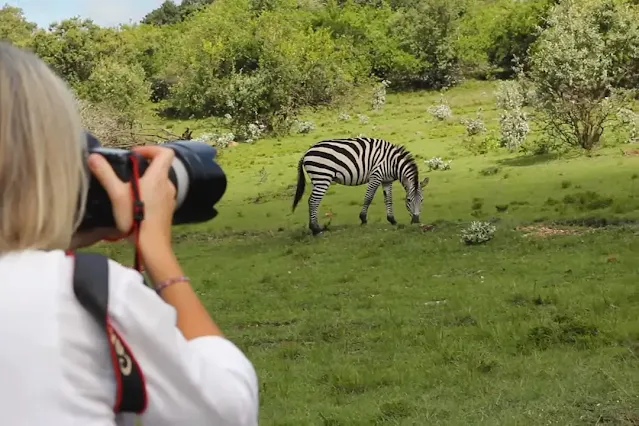Ever dreamt of straddling the infinite Kenyan savannah, face-to-face with Africa's magnificent creatures?
The thrill of spotting a pride of lions lazing in the golden morning light, or the heart-pounding rush as a cheetah streaks past your safari 4x4.
On a solo safari, you'll call the shots, tailoring your itinerary to target specific wildlife encounters and forge a deep connection with the wild on your own terms.
This guide equips you with the knowledge to maximize these encounters, turning your Kenyan safari into an awesome adventure.
Why Choose a Solo Safari in Kenya?
Kenya's wide-open spaces and wildlife aren't just begging to be explored, they're begging to be experienced intimately, and a solo safari isn't about following the crowd; it's about creating your own adventure.
As the sun dips below the horizon, painting the savannah in fiery hues, you linger at a watering hole, watching elephants gracefully sucking the last sips of water.
This isn't a scene from a documentary; it's your reality on a solo safari. You control the pace, making you fully present in every moment, from a mother elephant protectively guarding her calf to a flash of movement as a leopard disappears into the tall grass. Forget rigid itineraries; here, spontaneity reigns supreme.
Fancy spending an extra hour tracking a black rhino? The decision is entirely yours. It's this freedom, this deep connection with the raw beauty of Kenya, that makes a solo safari an experience unlike any other.
Prime Spots for Solo Wildlife Encounters
Kenya isn't a one-size-fits-all safari destination. Each national park offers a unique flavor of wildlife and scenery. Here's a breakdown to help you pick the perfect spot for your next adventure.
Maasai Mara National Reserve is the undisputed king of Kenyan safaris. Here, witness the Great Migration where predator encounters are legendary. Watch lions stalk their prey, cheetahs in a heart-stopping chase, and leopards camouflaged in the acacia branches.
Amboseli National Park is picture-perfect – herds of elephants silhouetted against the snow-capped peak of Mount Kilimanjaro. Amboseli also shelters impressive numbers of zebras and wildebeest, alongside a cast of lions, cheetahs, and hyenas.
Meru National Park is where you can escape the crowds. It has varied terrain, from forests filled with birdlife to open savannahs perfect for spotting large mammals. Look out for elephant herds, black rhinos, and Africa's classic predators – lions, leopards, and cheetahs.
Subject to the season, Lake Nakuru National Park will mesmerize – a pink flamingo haven! Millions of these graceful birds paint the shores a breathtaking hue. But the park has more than just a feathered show. Keep your eyes peeled for black and white rhinos, lions, leopards, and an array of birds.
Wildlife Safari Packages for Solo Travelers
| Aspect | Maasai Mara | Amboseli | Meru | Lake Nakuru |
|---|---|---|---|---|
| Price | $850 - $1785 | $900 - $3380 | $860 - $2375 | $436 - $729 |
| Duration | 2 - 7 days | 3 - 8 days | 3 - 5 days | 3 days |
| Accommodation | Luxury Tented Camps, Lodges, and Budget Camping | Luxury Lodges, Tented Camps, and Budget Camps | Luxury Lodges and Tented Camps | Mid-Luxury Lodges |
| Wildlife Viewing Opportunities | Big Five, Big Nine, Wildebeest Migration | Elephants, Lions, Cheetahs, Giraffes, and Zebras | Elephants, Rhinos, Buffalos, and Predators | Flamingos, Rothschild Giraffes, and Rhinos |
| Seasonality | Peak: July to October, Low: April to June | Year-round | Year-round | Peak: July to October, Low: April to June |
Optimizing Wildlife Viewing
Now that you've chosen the Kenyan kingdom to explore, let's get equipped for prime viewing. Timing is everything on safari. The dry season (June-October) is your best bet. With less rain, animals concentrate around shrinking water sources, making sightings more frequent.
Your accommodation plays a major role. Opt for safari camps or lodges with seasoned guides. These experts know the parks like the back of their hand, strategically moving through the terrain to maximize your wildlife encounters.
They'll also be your eyes and ears, deciphering animal tracks and calls to lead you to the best moments.
Your chariot through the savannah? A sturdy 4x4 with a pop-up roof. This allows unobstructed views, ensuring you don't miss a single flick of an elephant's ear or the flash of a leopard disappearing into the brush.
Finally, pack strategically. Binoculars are key to witnessing the details – a predator's watchful gaze or the intricate patterns on a butterfly's wings. A good camera with a zoom lens lets you capture these memories forever.
Remember, neutral-colored clothing blends well into the environment, and a wide-brimmed hat protects you from the African sun.
Enhancing Your Solo Safari Experience
Sure, game drives are the cornerstone of any Kenyan safari, but a truly profound adventure goes deeper. Ditch the safari 4x4 for a guided bush walk.
The thrill of tracking a lion's pugmarks in the dust or spotting a shy dik-dik darting between the bushes.
Walking alongside an experienced guide enhances appreciation for the finer details – the dance of dung beetles, the flash of iridescent feathers on a hummingbird, or the telltale signs of a recent elephant browse.
This is where you become part of the ecosystem, not just a spectator on the periphery. After dark the savannah transforms into a whole new world.
Take up a night drive and witness the nocturnal cast take center stage. Watch bat-eared foxes and springhares emerge for their nightly routines.
The spotlight might reveal a civet perched on a branch, its eyes glinting in the darkness. Look up – the absence of light pollution is breathtaking, a million stars splashed across the sky.
This nighttime adventure adds another dimension to your solo safari, a chance to witness those hiding in the African bush.
Solo Safety Tips
Kenya's wilderness is breathtaking, but safety is a must. Your guide is your expert on the ground. Always follow their instructions, especially regarding staying inside the safari vehicle during game drives.
They're trained to read animal behavior and keep you safe while maximizing wildlife encounters.
Maintain a safe distance from wild animals and avoid making loud noises or sudden movements that could startle them. Let your guide know if you feel uncomfortable at any point.
If on a self-driven option and heading out alone on any activity, inform your lodge or camp staff about your planned route and estimated return time. This allows them to locate you if needed and ensures a smooth flow for your solo adventure.
Final Thoughts
This guide has equipped you to surpass the typical Kenyan safari experience. Leverage this knowledge to design a package that prioritizes your target sightings. Want to witness the heart-stopping chase of a cheetah Focus on the Mara during the migration.
Craving a more secluded experience with a chance of encountering black rhinos? Meru awaits. Ditch the crowds, and embrace personalization.
Solo safaris deliver the ultimate flexibility. Imagine lingering at a watering hole long after others have moved on, or customizing night drives to target specific nocturnal predators. This is your adventure, tailored to your pace and curiosity.
Don't settle for a generic itinerary. Design a solo safari that reflects your travel DNA. Explore these packages and plan an experience that surpasses the expected.








